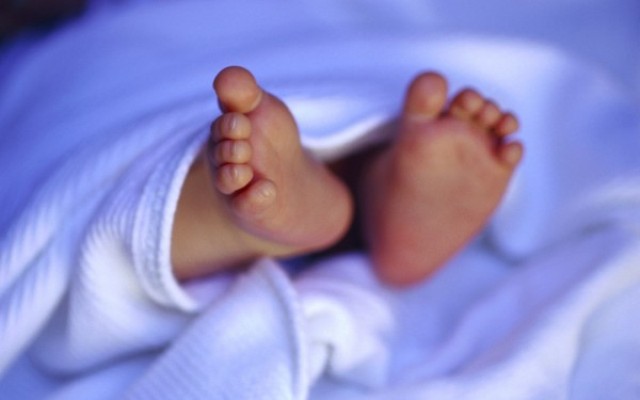
Pneumonia and diarrhoea, major cause of death in children under 5, reveals a new study on World Pneumonia Day
Kolkata, Nov 12 (IBNS): Of all the killer diseases that cause loss of life in children globally, pneumonia is a major reason for death, claiming nearly one of every four deaths in children under the age of five in 2016 with India witnessing over 1.5 lakh mortality in the same year from the scourge.
This is according to the latest Pneumonia and Diarrhea Progress Report 2018 published by the International Vaccine Access Center (IVAC) at the Johns Hopkins Bloomberg School of Public Health.
Today marks the 10th anniversary of the World Pneumonia Day.
According to the report, globally, these two common, yet largely preventable diseases, claimed the lives of more than 1.5 lakh children in India before they reached their fifth birthday.
Casualty due to pneumonia was 158,176, while diarrhea claimed 102,813 deaths.
In 2000, nearly 10 million children around the world died before reaching their fifth birthday. Yet, despite significant progress made by the global community in reducing child mortality by over 40 percent, more than 5.7 million children under-5 still died worldwide in 2016.
The report, which aimed to review progress and gaps in coverage of interventions to “protect against, prevent and treat”, profiled 15 countries with the greatest number of under-5 pneumonia and diarrhea related deaths.
It analyzed the key interventions countries have undertaken like breastfeeding, vaccination, access to care, use of antibiotics, administration of oral rehydration solution (ORS) and zinc supplementation.
In India, although the government initiated a phased national introduction of the pneumococcal conjugate vaccine (PCV) in May 2017, only six states have been included in the vaccination programme until now. However, no child had yet received the third dose when this data was collated.
Hence, the estimated PCV3 coverage of India in 2017 was zero percent. Further scale-up of the vaccine to all states should be considered, the report suggests.
The IVACC report, issued annually for a decade now, finds, although countries are making progress in immunization coverage, they seriously lag in efforts to treat childhood illnesses — especially among populations that are remote, impoverished or otherwise left behind.
“Progress to stop child deaths is hampered by persistent inequities in countries around the world,” said Kate O’Brien, professor in the Bloomberg School’s Department of International Health and IVAC’s executive director.
“Addressing inequities will demand greater levels of funding, strong political commitment, accountability supported by better data, and a coordinated global effort that prioritizes the most vulnerable.”
Eight out of 15 countries assessed failed to meet the targets for any of 10 interventions to protect against and treat pneumonia and diarrhea as outlined in the World Health Organization and UNICEF’s Integrated Global Action Plan for the Prevention and Control of Pneumonia and Diarrhea (GAPPD). Two of the 15 countries met the 90 percent target coverage rate for at least four vaccines while none were able to attain a 90 percent level of coverage for treatment measures.
Progress in India - home to more under-five pneumonia and diarrhea deaths than any other country in 2016 - has been mixed.
Since last year’s report, increasing coverage of Haemophilus influenzae type b (Hib) vaccine as well as continued scale-up of rotavirus vaccines, introduced for the first time in the middle of 2016, led to a bump in scoring for these interventions.
India’s score on exclusive breastfeeding, on the other hand, declined as did the coverage of ORS. The proportion of children receiving important treatments remains dismally low, with barely 20 percent receiving ORS for diarrheal disease.
For the first time, the annual report reviewed stratified national data, revealing inequities in providing life-saving interventions for children based on gender, location of residence (urban or rural), maternal education and wealth.
Yet for India, limitations in the data on these subgroups make it challenging to measure how well programs are targeting the most vulnerable children.
Across India, lowest vaccine coverage was identified among female children in rural areas and in poor urban areas. Despite improvements to full immunization coverage, the gender gap in coverage continues to exist. For example, in low-income areas of Delhi, 78 females were fully immunized for every 100 males fully immunized. Addressing these disparities can help reduce pneumonia and diarrhea burden.
In comparison, India’s neighboring country, Bangladesh experienced the largest positive change in a composite indicator of multiple interventions for control of pneumonia and diarrhea, along with Tanzania.
The authors conclude, in order to accelerate progress, governments must regularly collect quality data. The global community must improve access to interventions for children who are not being reached.
Funders must increase support for proven solutions or risk having progress slip away. Finally, integrating strategies related to health systems, poverty, and education may yield opportunities to improve equity.
Support Our Journalism
We cannot do without you.. your contribution supports unbiased journalism
IBNS is not driven by any ism- not wokeism, not racism, not skewed secularism, not hyper right-wing or left liberal ideals, nor by any hardline religious beliefs or hyper nationalism. We want to serve you good old objective news, as they are. We do not judge or preach. We let people decide for themselves. We only try to present factual and well-sourced news.







